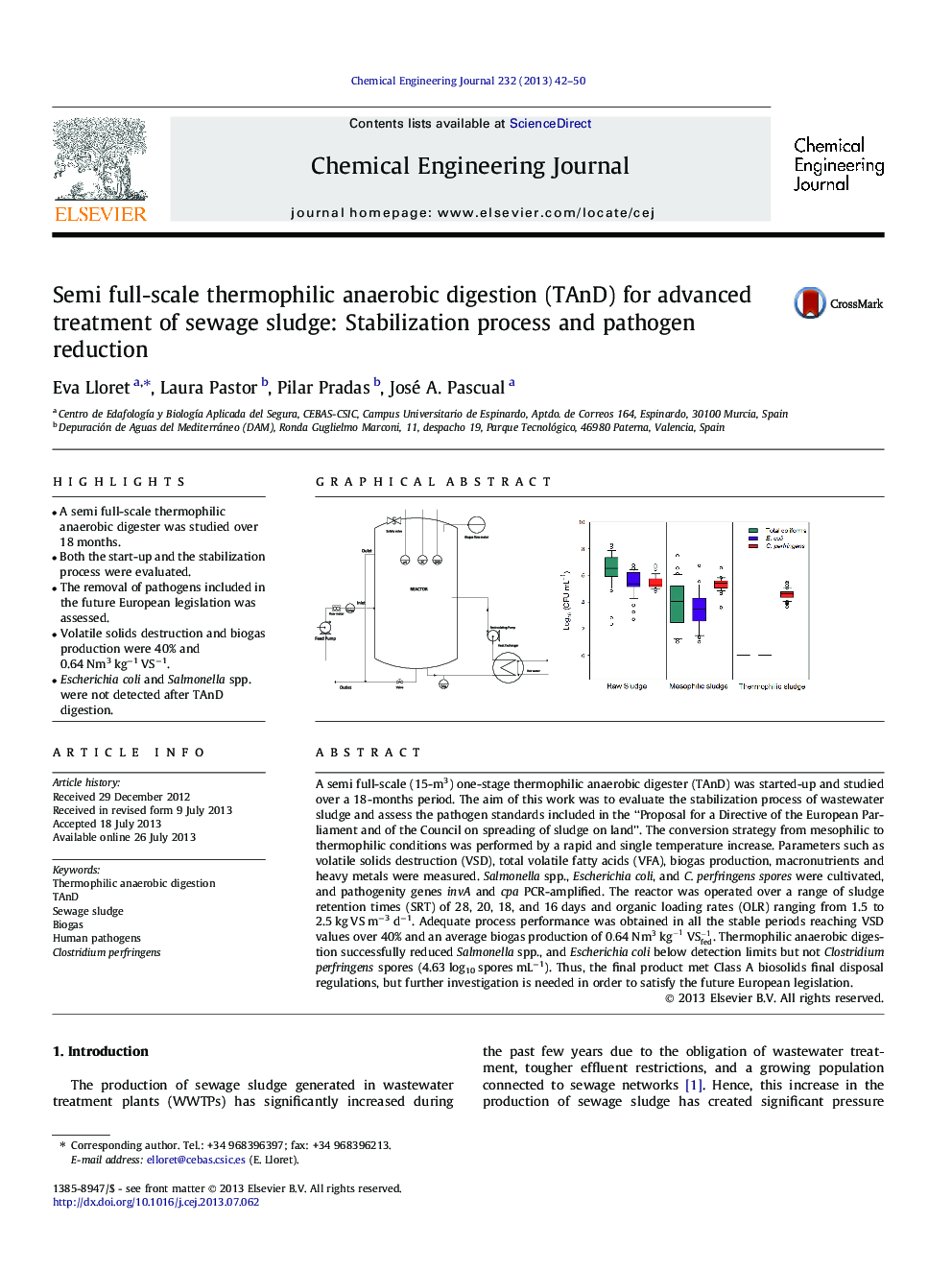| کد مقاله | کد نشریه | سال انتشار | مقاله انگلیسی | نسخه تمام متن |
|---|---|---|---|---|
| 148125 | 456406 | 2013 | 9 صفحه PDF | دانلود رایگان |

• A semi full-scale thermophilic anaerobic digester was studied over 18 months.
• Both the start-up and the stabilization process were evaluated.
• The removal of pathogens included in the future European legislation was assessed.
• Volatile solids destruction and biogas production were 40% and 0.64 Nm3 kg−1 VS−1.
• Escherichia coli and Salmonella spp. were not detected after TAnD digestion.
A semi full-scale (15-m3) one-stage thermophilic anaerobic digester (TAnD) was started-up and studied over a 18-months period. The aim of this work was to evaluate the stabilization process of wastewater sludge and assess the pathogen standards included in the “Proposal for a Directive of the European Parliament and of the Council on spreading of sludge on land”. The conversion strategy from mesophilic to thermophilic conditions was performed by a rapid and single temperature increase. Parameters such as volatile solids destruction (VSD), total volatile fatty acids (VFA), biogas production, macronutrients and heavy metals were measured. Salmonella spp., Escherichia coli, and C. perfringens spores were cultivated, and pathogenity genes invA and cpa PCR-amplified. The reactor was operated over a range of sludge retention times (SRT) of 28, 20, 18, and 16 days and organic loading rates (OLR) ranging from 1.5 to 2.5 kg VS m−3 d−1. Adequate process performance was obtained in all the stable periods reaching VSD values over 40% and an average biogas production of 0.64Nm3kg-1VSfed-1. Thermophilic anaerobic digestion successfully reduced Salmonella spp., and Escherichia coli below detection limits but not Clostridium perfringens spores (4.63 log10 spores mL−1). Thus, the final product met Class A biosolids final disposal regulations, but further investigation is needed in order to satisfy the future European legislation.
Figure optionsDownload as PowerPoint slide
Journal: Chemical Engineering Journal - Volume 232, October 2013, Pages 42–50